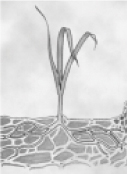|
TECHNICAL NOTES |
|
The concept of the low pressure in TWIN and
Extra Large tyres |
|
The wide low-pressure TWIN and Extra Large tyres have special design that will improve your yield, simplify work, protect your soil and crops.
|
|
Solid construction |
|
- |
TWIN is a bias-belted tyre, a combination of the cross-ply and radial-ply tyre design. Basically the carcass is like the diagonal design, giving a strong and durable tyre. The sidewalls are thicker than with a radial tyre, and therefore more resistant to cuts and damage. Also, more lateral stability is provided from this design, giving increased safety on slopes. |
|
- |
Extra Large tyres have a radial-ply tyre design. Soft and flexible
sidewall, in combination with the belts, gives maximum performance in
the field, excellent handling and comfort on the road. |
|
Both tyre concepts can be used with low inflation pressure, which means low soil compaction, and minimum rut formation. |
|
|
|
|
|
Large contact area |
|
A belt beneath the tread gives a flat profile to the
tyre tread and increases the contact area, spreading the load over a large
area and increasing traction. TWIN e Extra Large might,
in many cases, replace dual mounted standard |
|
|
|
High pull force |
|
When the horsepower is used fully, a need for good
and reliable traction is essential. That makes the construction and the
tread pattern of the TWIN e Extra Large tyres advantageous. |
|
Less soil compaction and damage |
|
With the development of larger, heavier, and more efficient
machines, soil compaction and damage follows almost inevitably. To prevent
such damage however, the vehicles have to be equipped with low inflation
tyres that manage to carry the heavy |
|
|
|
|
|
|

|

|
|
More efficient machines utilization |
|
Today’s efficient machines must be utilized during the complete season. Equipped with these tyres, work can be started earlier in springtime and proceed longer into the autumn, without ground damage, even in severe conditions. |
|
Tubeless design |
|
Most of the TWIN e EXTRA LARGE tyres are tubeless. This eliminates the risk of tube explosions and expensive downtime. This also means that you will be able to drive with low inflation pressure. |
|
Prolonged lifetime |
|
They have a gentle ground contact, which means less wear and a longer life. Compared with a standard tyre, these tyres can last 2–3 times longer. |
|
Complete wheels |
|
TWIN tyres are mostly delivered as complete wheel assemblies,
matched to the machine or implement, or special customer requirements. |
|
Tyre economy |
|
Sound tyre economy comes from regular maintenance, operational care and a correct inflation pressure. |
|
Rolling resistance and rut formation |
|
The power needed to move a wheel over the ground is
called rolling resistance. |
|
Pull force |
|
A wide tyre and low inflation pressure increases the contact area. The pull force is therefore transmitted without unnecessary slippage, rut formation or soil compaction. |
|
Slippage |
|
Low inflation pressure increases the tyre contact area
compared to high inflation pressure, reducing slippage. |
|
Load-carrying capacity |
|
It is the air that carries the load. Depending on the weight and the load of the machine, the inflation pressure and size of the tyre can be decided. The load-carrying capacity on wet and soft ground increases a lot with large tyres and a low inflation pressure. Follow the recommendations in this book regarding inflation pressure and load capacity. |
|
Comfort |
|
Low inflation pressure makes the tyre soft and flexible and able to "absorb" the bumps on the road. This makes the ride more soft and comfortable for the operator. |
|
Wear and tear |
|
The level of wear and tear will vary with the inflation
pressure and the ground conditions. |
|
Tyre shipment pressure |
|
All wheels assembly by Trelleborg are inflated to a shipment pressure. Therefore, always adjust the pressure to a suitable service pressure according to the technical data tables. |
|
|